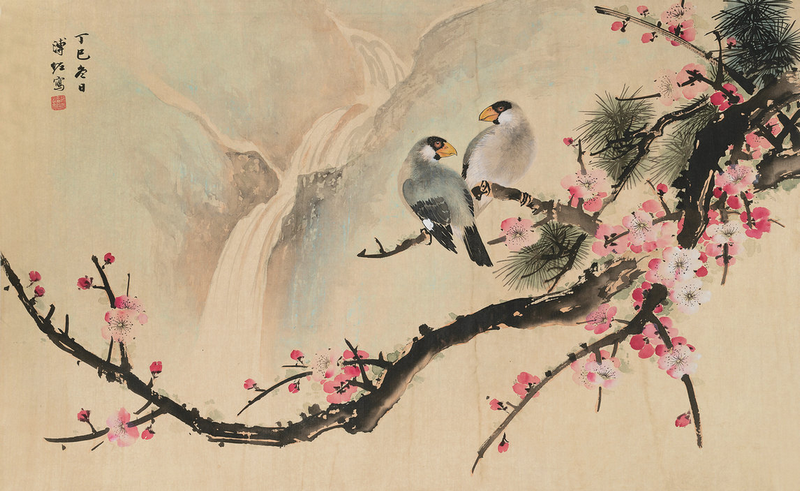 |
| Birds and Plum artist: Pu Zuo (1918-2001)[Photo/english.cguardian.com] |
Flowers and birds were favorite subjects of paintings in ancient China, offering a kind of special aesthetic interest. Flower-and-bird painting originated from the Tang Dynasty (618-907). This art form slowly advanced from initially serving as an ornamental pattern for daily utensils, then later serving as symbolic, metaphoric and allegorical elements in the background of figure painting. Finally, flowers and birds are seen in independent themes.
Flower-and-bird painting further developed during the Five Dynasties period (907-960), and reached maturity during the Song Dynasty (960-1279). The Five Dynasty Period was a crucial era of shaping this style as one of the three major trends in Chinese traditional painting, together with Landscape Painting and Figure Painting.
Flower-and-bird painting is peculiar to China. Flowers and birds can be associated with almost all thoughts and feelings of a human being. They can symbolize feminine beauty, virtue, political authority, omens, and lucky niceness. Once established, this tradition became popular in every dynasty. Therefore, their symbolic meaning grew increasingly rich and specific.
Four Gentlemen and Three Friends of Winter are the representatives of flower-and-bird painting. Plum blossom, orchid, bamboo, and chrysanthemum were known as the Four Gentlemen. Their common features are nobleness, modesty, and integrity. And as the Three Friends of Winter, pine, bamboo, and plum blossom are often associated with a man of great virtue. For their own natural qualities, these five plants are given the corresponding symbolic meanings and appear in flower-and-bird paintings frequently.
The tradition of flower-and-bird painting evolved into two main trends, namely the Gong Bi tradition where artists focused on small details, careful application of color and meticulous technique, giving their art a realistic and ornamental feeling, while the other trend of Xie Yi is more expressionistic and impulsive.
We Recommend:
